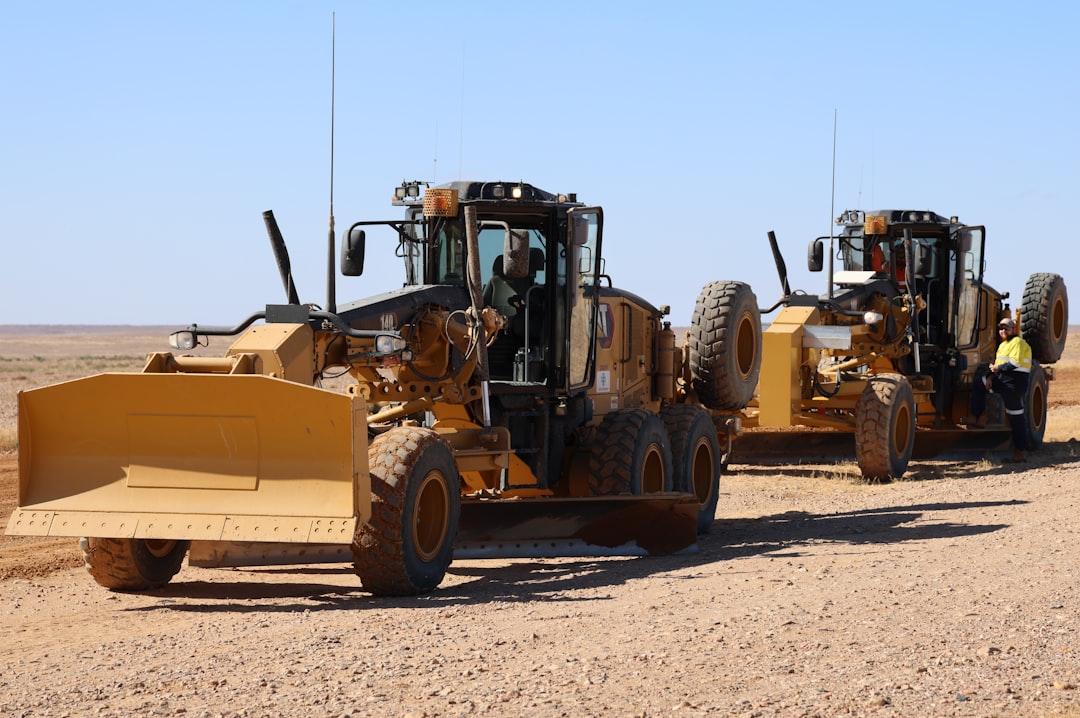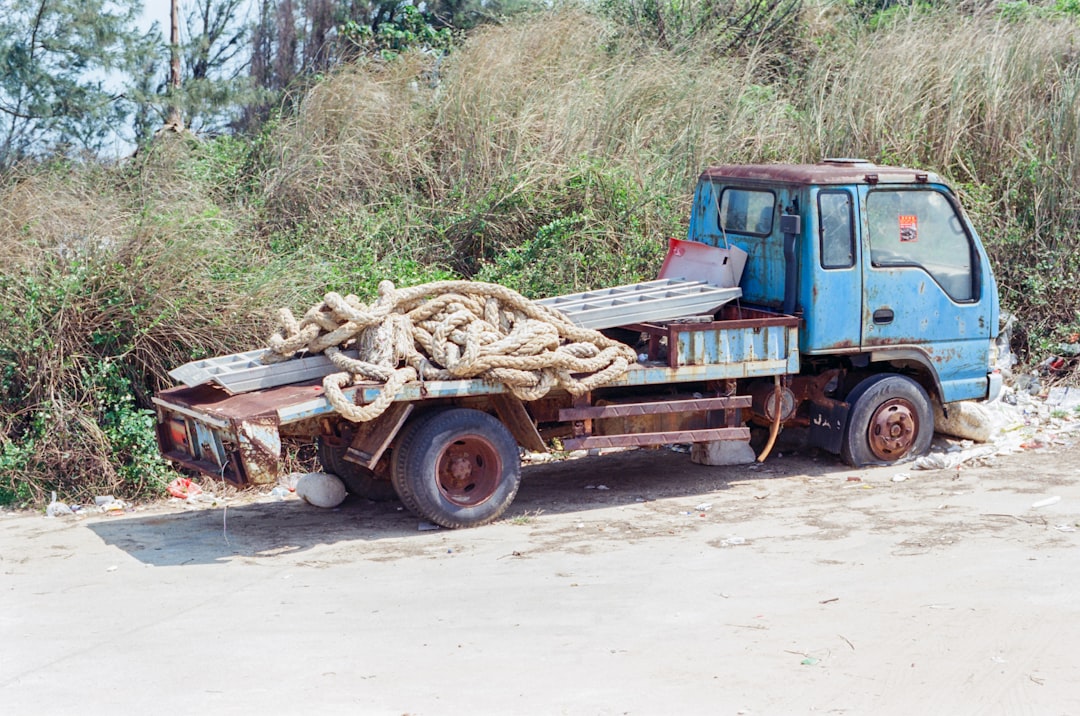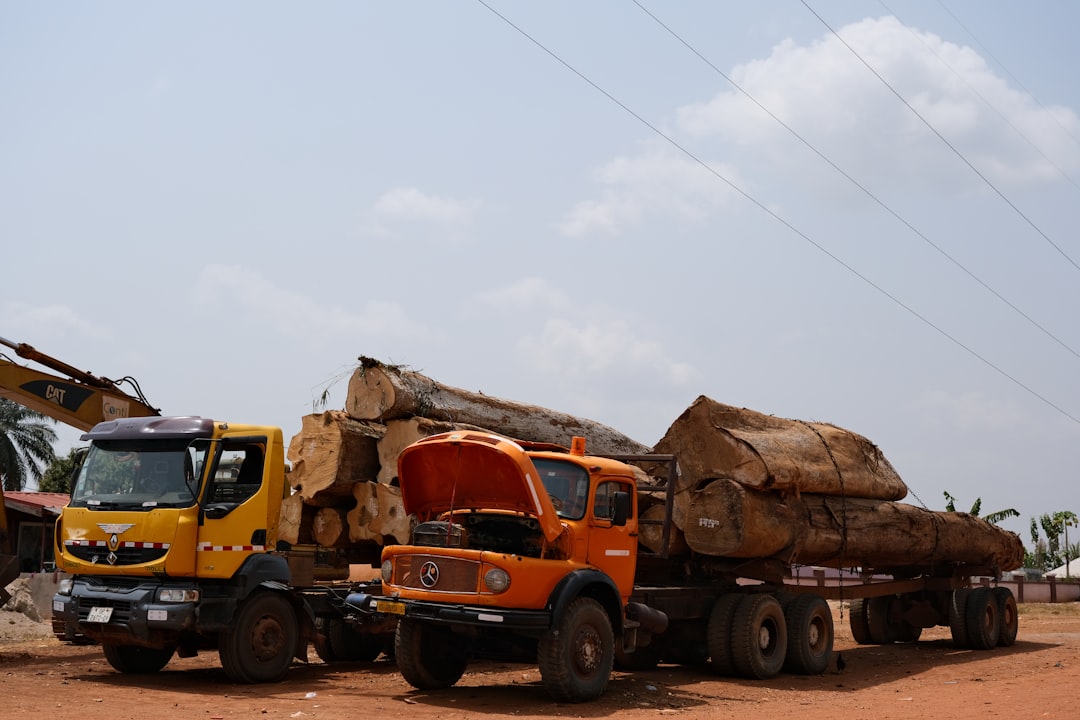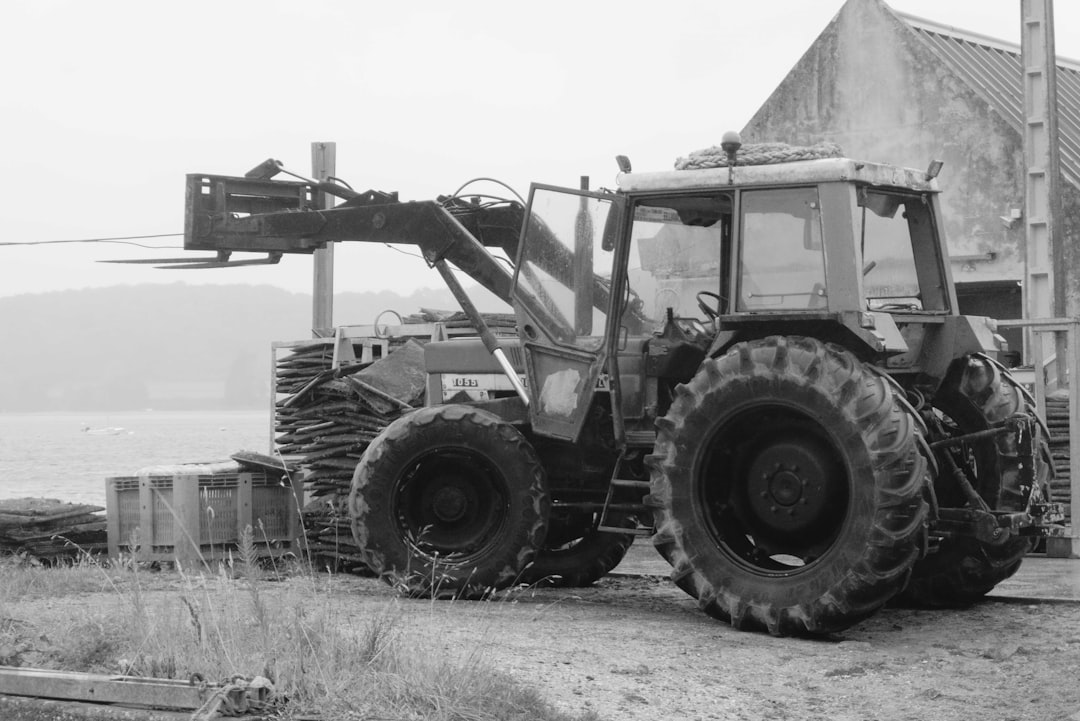

Engage prospects with a scan and streamline customer engagement with FREE QR code marketing tools by Sona – no strings attached!
Create a Free QR CodeFree consultation

No commitment

Engage prospects with a scan and streamline customer engagement with FREE QR code marketing tools by Sona – no strings attached!
Create a Free QR CodeFree consultation

No commitment
QR codes have become a strategic powerhouse for bridging offline engagement with online action in the heavy equipment towing industry. For towing services, they provide a seamless way to streamline requests, enhance safety compliance, and facilitate documentation, all without extra apps or complicated onboarding. Inefficient tracking and missed logging of high-value prospects remain a major challenge, often leading to lost opportunities and delayed responses that can hinder both service quality and business growth.
By integrating QR codes, commercial vehicle towing providers can offer rapid access to vital service details, insurance documentation, and feedback channels like Google reviews. Real-world scenarios show that many potential clients, such as facility managers or on-site contractors, interact with physical assets but never enter the company CRM. These unrecognized gaps in visibility mean leads and intent signals are easily missed, allowing competitors to engage while making timely follow-up more difficult.
The rising demand for heavy equipment towing and increased expectations for fast, high-quality service make QR technology an essential differentiator. QR codes enable operators to capture actionable engagement data at every touchpoint, addressing the risks of missing records, delayed outreach, and lost cross-sell chances. This guide explores how QR can drive measurable results and unlock new levels of operational capability in heavy equipment towing.

A core frustration in heavy equipment towing is the slow, error-prone process of submitting service requests and accessing urgent documentation. Paper packets get lost, phone calls go unanswered during emergencies, and on-site staff often do not know the correct portal or contact path to initiate a job. Sona QR’s product overview shows how QR codes bridge the gap between physical touchpoints and digital outcomes, converting paper-heavy, manual workflows into efficient, trackable processes that work in the field and under pressure.
Missed contacts, especially those who never fill out a form or call, result in lost leads and sluggish response. With QR codes, every physical asset becomes a digital access point that captures visitors and intent data that might otherwise go untracked. Instead of relying on a dispatcher to log every interaction, scans automatically create a time-stamped signal that can flow into your CRM or job management system. The result is faster triage, better documentation, and fewer delays for high-stakes tows.
Steps to maximize impact:
Example: Instead of requiring a call or form submission for a tow, companies can place QR codes on invoices, receipts, yard gates, and machine decals to enable instant service requests and capture essential details. Even stakeholders who avoid standard channels can self-serve, submit everything needed for dispatch, and be added to a segmented audience for future updates without adding friction.

Towing operations face two interconnected problems: operational complexity and data capture gaps. Teams move quickly between jobs, sites, and assets, which creates disconnected paper trails and little real-time visibility into who is asking for what. When safety standards change or documentation expires, communicating updates to a dispersed workforce and large client base is time consuming. These challenges undermine customer acquisition, slow response times, and increase risk.
QR codes address this reality with a simple scan that opens a high-value action. The format eliminates login friction and makes it easy for anyone on-site to request service, retrieve insurance, confirm compliance, or provide feedback. For operators, it produces structured, time-stamped data that can be tied to campaigns, assets, and accounts. For customers, it means help is one scan away, so they are more likely to engage when it matters.
QR codes offer solutions such as:
Surfacing engagement signals that were previously untracked allows heavy equipment tow providers to act on real-time data instead of guesswork. Over time, the organization moves from reactive to proactive, with better visibility into demand, satisfaction, and growth opportunities.

Heavy equipment towing companies must maintain current compliance information, field-ready communication, and easy access to documents for both staff and clients. Choosing the right QR format ensures scanners land exactly where they need to be and that your team can measure what works.
Some of the most useful formats for this vertical include:
Dynamic QR codes are recommended for any use case that might change or that benefits from analytics and segmentation. Static QR codes work for fixed resources like a long-lived PDF or a safety poster that rarely changes. Align the format with your workflow and user expectations, and manage everything centrally with a platform such as Sona QR so updates and reporting are simple.

Data fragmentation is common in heavy equipment towing. Leads trickle in from phone calls, field interactions, and paperwork left behind on jobs. The result is inconsistent follow-up and missed chances to deepen relationships with contractors, municipalities, and industrial facilities. QR codes unify engagement by turning high-traffic surfaces into measurable entry points.
Start by mapping the offline moments that matter most. Look for choke points where friction causes delays or drop-offs, such as incident reporting, insurance proofing, and post-service feedback. Then layer QR codes to capture intent, make self-service simple, and route data to your CRM or ticketing system. Over time, you will see a clear pattern of which touchpoints create the best leads and the fastest paths to revenue.
High-impact placements include:
When QR codes are used systematically at these points, every action funnels into a single stream of insight. This makes ROI clearer, staffing easier to plan, and cross-sell opportunities simpler to identify.

Operational inefficiency, delayed engagement, and missing documentation often cause revenue leakage and customer dissatisfaction. The following use cases are proven to reduce friction and create measurable improvements in speed, safety, and satisfaction.
By transforming missed signals and paper processes into trackable digital steps, heavy equipment towing providers create a foundation for continuous improvement and growth.
Each QR scan is a strong intent signal. It captures context such as location, time, and device, and it indicates what a person wanted at that moment. By deploying multiple QR codes across asset types and customer touchpoints, you can segment your audience automatically and retarget based on behavior rather than guesswork.
Start with clear distinctions that matter in heavy equipment towing. For example, differentiate facility managers from jobsite contractors, municipal fleet coordinators from construction foremen, and procurement officers from safety supervisors. Their needs and buying timelines differ, so the content and follow-up should match. With Sona QR, each code can carry tags for use case, channel, location, and journey stage, then sync those tags to your CRM or ad platforms for tailored campaigns. For tactical retargeting ideas, explore Sona’s playbook on intent-driven retargeting.
Practical steps:
With this approach, every scan becomes a smart entry point. Sona QR streamlines the segmentation and automation so your team can respond faster and more personally to the people most likely to need heavy towing now.
QR codes do more than connect to a page. They connect your offline surfaces and field operations to digital systems that capture demand, attribute outcomes, and nurture relationships. For heavy equipment towing, a multi-channel strategy spans trucks, yards, job sites, invoices, events, and partner networks. QR codes unify these channels so your marketing and operations share the same real-time view of engagement. See Sona’s take on offline attribution.
Add QR codes wherever your audience sees your brand and needs a direct action. A code on a truck door can capture a contractor’s urgent request. A code on a trade show placard can feed a segmented list that gets event-specific follow-up. A code on a work order can prompt a one-click review. With centralized management through Sona QR, you can monitor performance across all channels, then adjust placements, CTAs, and destinations as you learn what works.
Use cases across channels:
QR codes act as an offline onramp to your digital engine. They also unlock data from channels that were previously hard to measure. With a platform like Sona QR, you can manage all codes, route scans to the right experiences, and sync engagement data to your CRM and ad tools for continuous optimization.
Launching a QR initiative for heavy equipment towing is straightforward when you align each step with a specific business outcome. The goal is to replace analog workflows with digital pathways that capture data, speed response, and improve compliance. Keep your audience, environment, and desired action at the center of each decision.
Use the following steps to plan, deploy, and improve your campaign. Each step can be implemented with Sona QR, which simplifies code creation, performance reporting, and CRM integration.
A disciplined approach prevents QR from becoming a scattered set of links. Instead, it becomes a connected system that improves operations, marketing, and customer experience in tandem.
Translating offline engagement into measurable revenue has historically been difficult in towing. Print materials, truck signage, and yard conversations do not leave a native digital trail. QR codes change that by recording every scan with context, then pushing the data into systems where sales, operations, and finance can see the impact. The goal is not just to tally scans, but to tie scans to booked jobs, retention, and lifetime value. Read more on Sona’s take on revenue attribution.
With a platform like Sona QR and Sona, an AI-powered marketing platform that turns first-party data into revenue through identity resolution, data activation, and automated attribution, you can capture the full journey. Sona QR logs the who, where, and when for each scan, and Sona.com connects those interactions with web visits, ad clicks, email engagement, and CRM activity. The combination lets you report on pipeline influenced by QR, attribute revenue to specific placements, and trigger workflows based on real-world engagement.
Key analytics to implement:
The outcome is a complete picture of how offline moments drive business results. That clarity helps justify budgets, sharpen marketing, and inform operational decisions with facts instead of assumptions.
QR initiatives thrive when they are embedded into daily operations and aligned with clear incentives. The most successful towing providers treat QR codes as part of their service experience, not just a marketing add-on. Adoption rises when crews are trained to reference codes, when CTAs promise immediate value, and when scans trigger useful follow-ups.
Start with a small number of high-visibility placements and expand as you learn. Use analytics to identify top-performing codes, then replicate their format, CTA, and location across more assets. The aim is to build a repeatable playbook that any branch or partner can deploy quickly.
High-impact tips:
Creative deployment examples include a QR printed on magnetic door panels that opens a service request form with the truck ID prefilled, and a QR printed on invoice footers that links to a net-terms payment portal and a short satisfaction survey. Another example is a laminated QR tag on recovery chains and rigging that opens the current operating limits and inspection logs.
Heavy equipment towing services are rapidly evolving with the integration of QR codes, bringing operational efficiency and a superior customer experience. By using innovative solutions to address problems such as anonymous engagement, fragmented data, and delayed outreach, operators set themselves apart in a competitive market, meet higher safety standards, and access new growth opportunities. The future of heavy equipment towing is driven by smarter, real-time engagement powered by QR technology, not just by bigger trucks or faster response times, but by transparent, data-driven service. With Sona QR, you can start creating QR codes for free, track performance across every asset, and connect scans to revenue in minutes.
QR codes have revolutionized heavy equipment towing services by transforming how operators and clients access critical information and support instantly. Whether it’s streamlining equipment identification, expediting service requests, or enhancing communication on the job site, QR codes replace cumbersome paperwork with seamless, mobile-friendly actions that improve efficiency and reduce downtime. Imagine dispatchers receiving real-time updates just by scanning a code on any piece of equipment—speeding up response times and boosting customer satisfaction.
With Sona QR, heavy equipment towing companies can create dynamic, trackable QR codes in seconds, update service details or contact info instantly without reprinting, and link every scan directly to operational insights. This means no missed opportunities and smarter resource allocation based on actual usage patterns. Start for free with Sona QR today and turn every scan into faster service, stronger client relationships, and measurable growth in your heavy equipment towing business.
QR codes streamline service requests, improve safety compliance, facilitate documentation, capture engagement data, and enable faster response times without requiring apps or complex onboarding.
QR codes turn physical assets into digital access points that capture time-stamped engagement data, linking scans to CRM systems and enabling real-time visibility and better follow-up.
Common QR code formats include web links for service requests, vCards for contact details, SMS and email initiators for quick incident reporting, document downloads for compliance, and app download links.
Begin by defining your primary goal, selecting high-friction moments to digitize, choosing dynamic or static QR codes, designing and testing codes for your environment, deploying them strategically, training teams, and tracking performance to optimize.
The article does not specify exact towing costs but highlights that QR codes can improve service speed and efficiency, potentially reducing delays and operational costs.
Place QR codes on equipment and vehicle decals, service invoices, yard gates, job site signage, trade show booths, and customer welcome kits to capture requests, documentation, and feedback.
QR codes enable instant service requests, provide easy access to insurance and compliance documents, and facilitate post-service feedback, resulting in stronger customer retention and more public reviews.
QR codes can unify offline surfaces like trucks, yards, brochures, events, and direct mail with digital systems to capture demand, attribute outcomes, and nurture customer relationships.
Companies can analyze scan volume by source, measure engagement quality like requests or downloads, optimize landing pages, integrate with CRM and ticketing systems, and attribute revenue to specific QR touchpoints.
By capturing every scan as a digital lead, QR codes prevent lost contacts, automate data capture, and trigger real-time alerts, enabling faster triage and improved follow-up.
QR codes help overcome disconnected paper trails, slow documentation access, fragmented data capture, and difficulties in communicating updates to dispersed teams.
Each scan captures intent data and context, allowing segmentation by role, location, and behavior, which can be synced to CRM and ad platforms for personalized, intent-driven marketing campaigns.
The article does not list specific local towing services but suggests using QR technology to identify providers who offer fast and efficient service with real-time digital engagement.
Use Sona QR's trackable codes to improve customer acquisition and engagement today.
Create Your FREE Trackable QR Code in SecondsJoin results-focused teams combining Sona Platform automation with advanced Google Ads strategies to scale lead generation

Connect your existing CRM

Free Account Enrichment

No setup fees
No commitment required

Free consultation

Get a custom Google Ads roadmap for your business






Launch campaigns that generate qualified leads in 30 days or less.
